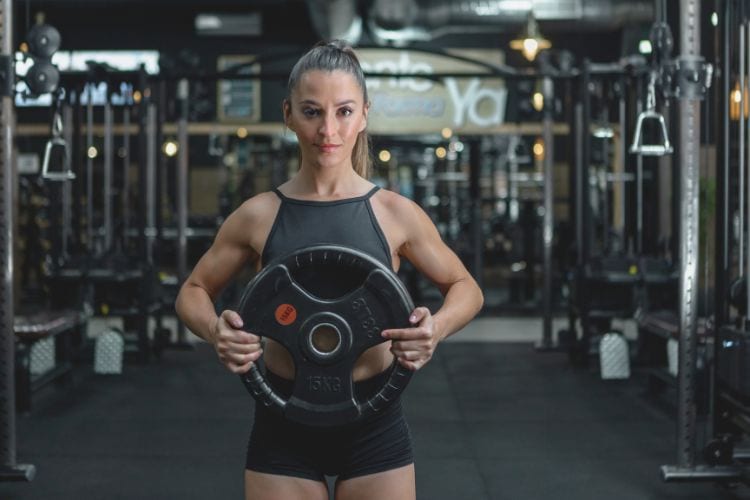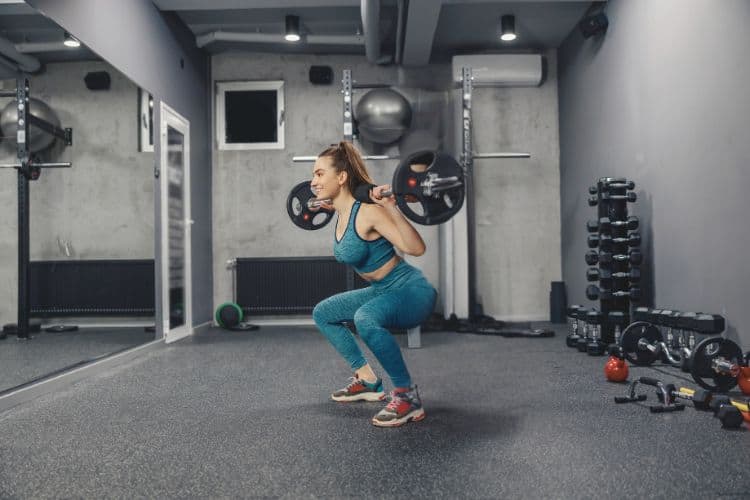Sign up for workout ideas, training advice, reviews of the latest gear and more.






In the world of fitness, the term “strength training” often conjures images of bodybuilders, powerlifters, and intimidating gym equipment. While traditional weightlifting plays an essential role in physical conditioning, there’s another form of strength training that’s gaining traction among women worldwide – Dynamic Strength Training (DST).
Dynamic Strength Training, unlike static or isometric exercises where you hold a position, focuses on fluid and controlled movements. It merges strength with flexibility, emphasizing the power of motion. Whether it’s through weightlifting, resistance bands, bodyweight exercises, or a combination of these, DST promotes functional strength, which is the strength our bodies use in everyday life.
Functional Fitness: DST is not just about looking good; it’s about feeling good and being efficient in daily tasks. Picking up groceries, playing with kids, or climbing stairs – DST helps in making all these activities easier.
Flexibility and Balance: DST helps increase flexibility and balance, crucial aspects often overlooked in traditional strength training. This can reduce the risk of injuries and improve posture.
Muscle Toning without Bulking: While bulking is a myth associated with women lifting weights, DST offers a combination of strength and endurance, leading to lean and toned muscles.
Increased Metabolism: Muscle is metabolically active, meaning the more muscle you have, the more calories you burn at rest. DST helps in muscle development, thus boosting metabolism.
Bone Health: Especially important for women, strength training of any kind, including DST, can help in increasing bone density, reducing the risk of osteoporosis.
Dumbbell Thrusters: Combining a squat and an overhead press, this exercise targets your lower body and shoulders simultaneously. Start in a squat position holding dumbbells at shoulder height. As you stand, press the dumbbells overhead.
Lunges with Bicep Curls: As you step forward into a lunge, curl dumbbells towards your shoulders. As you step back, lower the weights.
Plank to Push-up: Begin in a plank position. Lower down to your forearms and then press back up to a hand plank, essentially doing a push-up.
Jump Squats: Add a dynamic twist to the regular squat by jumping explosively from the squat position.
Burpees with a Shoulder Press: After jumping back into a plank position and then back to standing, add a shoulder press with dumbbells.
Remember to adjust the weight based on your comfort and ensure you maintain proper form throughout.
Incorporating DST in Your Routine
Start Slow: If you’re new to DST, begin with bodyweight exercises. Once you’re comfortable, gradually add weights and increase intensity.
Combine Static and Dynamic: Mix DST with traditional strength training for a well-rounded workout routine.
Use Proper Equipment: Ensure you have a good pair of shoes, and if you’re using weights, ensure they’re in good condition.
Seek Guidance: If possible, work with a fitness trainer initially to understand the movements and ensure proper form.
Consistency is Key: Like any fitness regimen, consistency brings results. Aim for at least 2-3 DST sessions a week.
Historically, women have been boxed into specific workout regimes that typically emphasize cardio and light resistance exercises, with the fear of “bulking up” being a primary deterrent from exploring other fitness avenues. Over time, as knowledge has grown and myths have been debunked, more women are embracing varied forms of training. Among these, Dynamic Strength Training stands out, bringing with it an evolution in how women perceive strength.
What truly sets DST apart from other forms of training is its emphasis on motion. DST is the dance of fitness regimes. It’s dynamic, graceful, and powerful. Every move, every lift, and every stretch becomes a synchronized ballet of muscles working in tandem. The dynamism of DST doesn’t just end with its movements. It reflects in the energy levels, the posture, and even the confident stride of the practitioner.
The benefits of any physical activity on mental health are well-documented. However, with DST, there’s an additional layer. The fluidity and the combination of strength and movement can be incredibly meditative. Concentrating on the rhythm of your body helps in centering the mind.
Moreover, there’s an empowerment angle. Lifting weights, feeling the muscles work, and witnessing firsthand the body’s capabilities can be an excellent confidence booster. For women, who historically have faced societal pressures regarding body image, this form of training can be a reclamation of strength and self-worth.
The beauty of Dynamic Strength Training lies in its adaptability. Here’s how one can make DST their own:
Incorporate Yoga or Pilates: Both disciplines emphasize fluid movements and can complement DST routines. For instance, transitioning from a weight sequence into a yoga flow can enhance flexibility and mental focus.
Mix Cardio: Intersperse DST exercises with short bursts of high-intensity cardio for a comprehensive workout that burns calories and builds strength.
Explore Equipment: Beyond dumbbells, consider kettlebells, resistance bands, or even TRX systems to diversify your DST workouts.
Set Goals: Whether it’s achieving a particular pose, lifting a specific weight, or simply feeling more energetic, having clear goals can enhance your DST journey.
Join a Community: There are many online and offline groups dedicated to DST. Joining a community can provide motivation, new routines, and a platform to share achievements.
While DST is empowering, there’s always a risk of injury if exercises aren’t done correctly. Listen to your body. If something feels off, it probably is. Ensure you warm up before every session and cool down post-workout. Hydration is crucial, as dynamic workouts can lead to quicker dehydration. Lastly, consider periodic consultations with fitness professionals to refine your techniques.
Dynamic Strength Training isn’t just another workout regime; it’s a movement in itself. As more women embrace DST, there’s a collective shift towards breaking stereotypes and redefining what women’s fitness looks like. It’s no longer about fitting into a mold but breaking it to create a unique, personal fitness narrative.
In embracing DST, women are not just finding strength in their muscles but in their identities. It’s a testament to the fact that strength isn’t about how much you can lift but about understanding and harnessing the power within. As you embark on or continue your DST journey, remember that every lift, stretch, and movement is a step towards a stronger, more empowered you.
Stay up to date on the latest women’s health, fitness and lifestyle trends and tips.